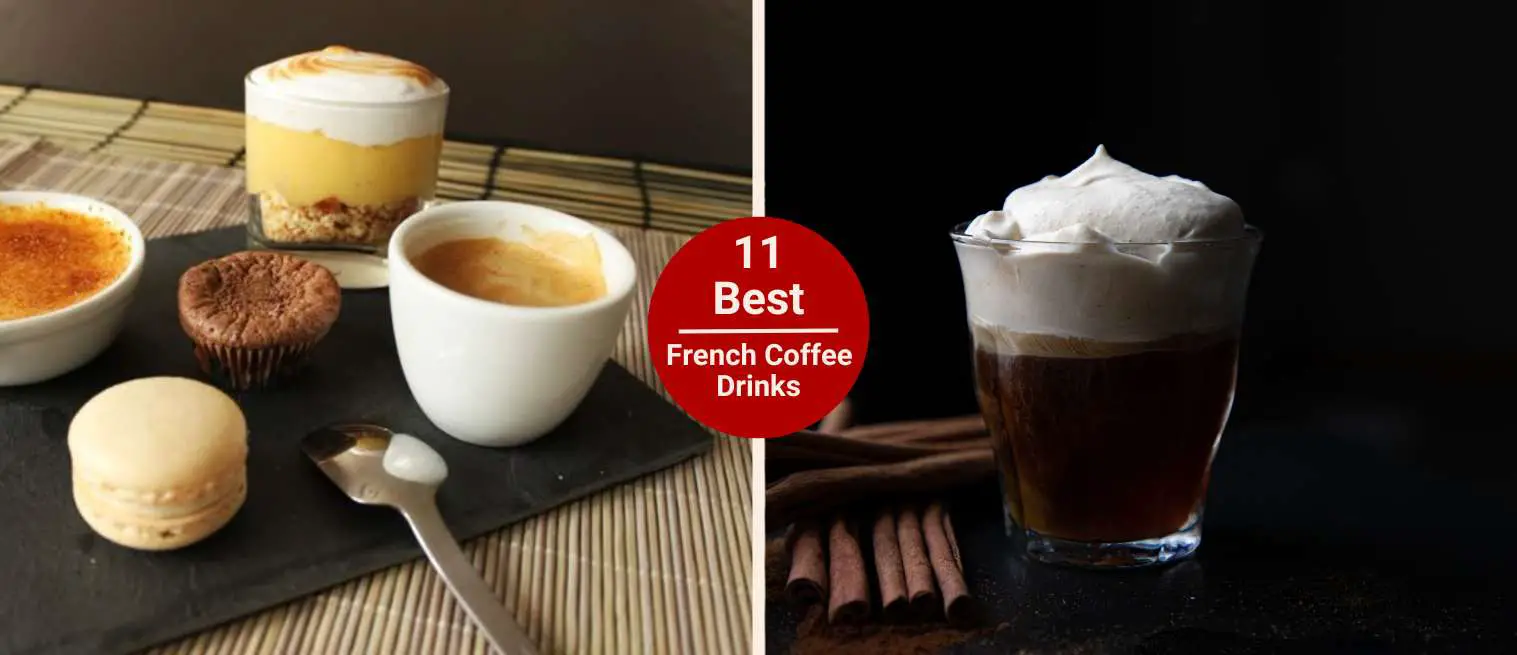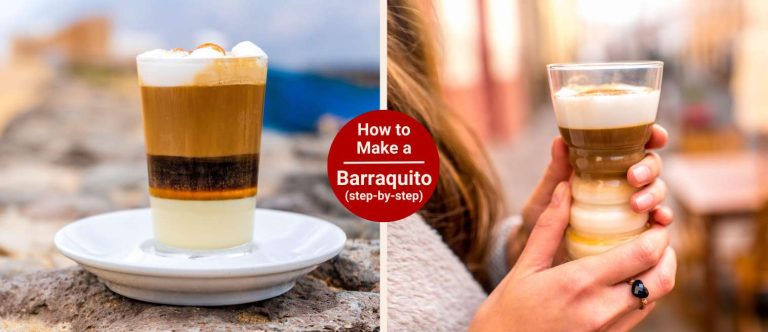11 Best French Coffee Drinks You Must Try
Last updated on September 30th, 2025 at 12:15 pm
Are you tired of your usual coffee routine?
I sure was, especially during those sweltering summer days when a hot drink felt more like punishment than comfort. That’s when I stumbled into this cozy little French café tucked between a bookstore and a florist.
I wasn’t planning to stay long, but the chalkboard said Café Glacé, and curiosity won. One sip of that chilled espresso over ice, bitter enough to bite but smooth like silk.
That single drink opened a door. I started exploring other French coffee drinks, not just for the flavors, but for the rituals, textures, and stories behind each one.
In this guide, I’ll walk you through 11 of the best French coffee drinks you need to try. From creamy breakfast bowls to fiery spiked brews, you’ll learn what makes each one special and maybe even find a new favorite to shake up things. So let’s start brewing!
11 Best French Coffee Drinks
Here are 11 of the best French coffee drinks that bring café culture straight to your home. If you’re also curious to learn about “Best Italian coffee drinks,” then read here.
1 – Café Noir

It’s basically the French answer to Italian espresso: bold, concentrated, and packed with deep roasted flavor. There’s just enough bitterness to jolt your senses but not overwhelm them. That’s why it’s served straight: no milk and sugar.
The proper way to make a café noir is simple but precise: use a small amount of water and finely ground dark roast beans. If you’re brewing it at home with a moka pot or espresso machine, aim for a 1:2 ratio. In other words, one part coffee to two parts water.
You want to serve it hot, ideally in a porcelain demitasse. That part’s non-negotiable.
For a true French flavor, many cafés and locals turn to Café Richard. Their Sarabande blend, in particular, brings out that rich, smoky depth with a slightly spicy finish that tastes unmistakably Parisian.
This isn’t the kind of drink you sip while scrolling through your phone. It’s a quick, strong shot, usually taken while standing at the bar. Then, a small nod to the barista, and you’re on your way.
2 – Café Allongé
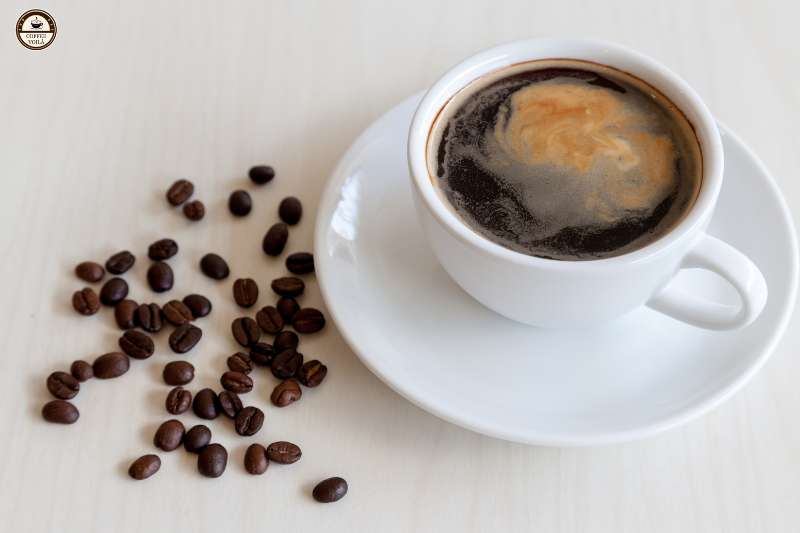
If you’ve ever found espresso a bit too intense but still want that deep, roasted kick, café allongé might be your sweet spot. Essentially, it’s a “long espresso.”
In other words, it’s made with more water than a standard shot, but not quite a full cup of coffee. Somewhere between an espresso and an Americano, but with that unmistakably French finesse.
The trick is in the ratio. Instead of the usual 1:2 espresso-to-water setup, you stretch it closer to 1:3 or even 1:4, depending on your taste. I usually start with 18 grams of finely ground dark roast and pull it out to around 60–70 grams of liquid.
It gives you that bold, slightly bitter flavor without smacking you in the face like a straight café noir might. It’s the kind of drink you sit with and take your time. Let it cool a bit and sip slowly.
Also, you don’t need to add milk or sugar. The café allongé stands fine on its own: smooth, slightly smoky, and mellow enough to enjoy without rushing.
3 – Café Crème
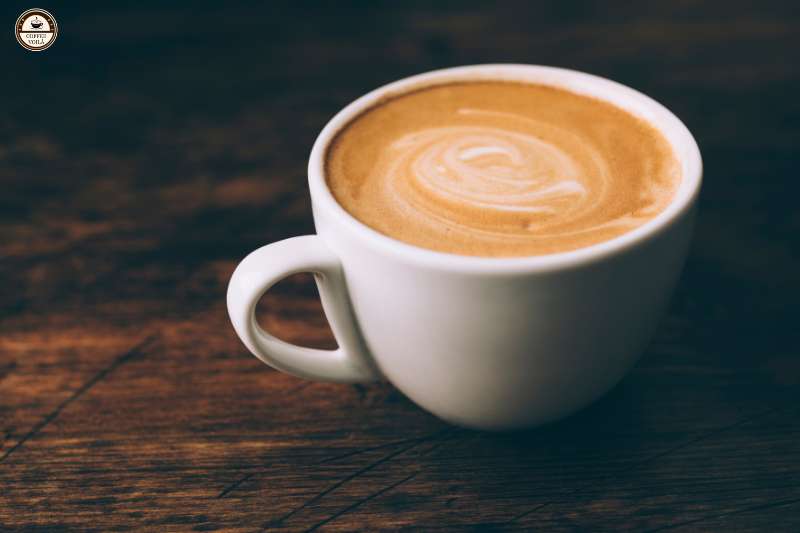
If you’ve ever had a latte, then you’re already pretty close. However, the French twist makes this breakfast drink feel a bit more… well, French.
Here’s the thing: the café crème isn’t only espresso with milk. It’s about balance. You start with one shot of espresso, around 30 ml, then add about 120 to 150 ml of steamed milk, topped off with a bit of foam.
Not too much, though. This isn’t a cappuccino. The milk should be silky, not frothy.
What really surprised me the first time was that it was served in a bowl. At first, I thought it was for soup, but that’s how it’s done, especially in French homes or traditional cafés.
Notes: I suggest warming your bowl beforehand to keep your drink hot for longer. And pair it with a croissant or tartine (buttered toast with jam). That combo will change your mornings.
4 – Café au Lait
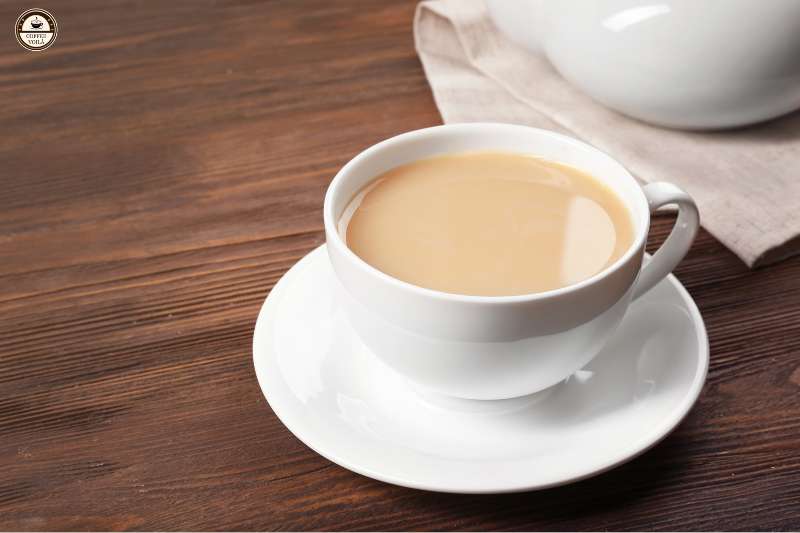
Out of all the French coffee drinks, café au lait is probably the one I’ve made the most at home. It’s simple, comforting, and doesn’t demand fancy gear.
You only need a French press or even a basic drip machine will do the trick. The key here is using strong brewed coffee rather than espresso. That’s what makes it different from a latte or café crème.
The ratio is straightforward: equal parts hot milk and strong coffee. I usually do about 180 ml of each, depending on the size of the cup or bowl, if you wanna go traditional.
If you’re making this at home, heat your milk until it’s steaming but not boiling. Also, you can froth it a little if you want.
I like to pair mine with a buttery croissant or pain au chocolat. Something about that combo makes even a Tuesday feel like a slow Parisian morning.
Notes: Don’t water down the coffee. Go for a dark roast and brew it a little stronger than usual. That way, the milk won’t overpower the flavor.
5 – Noisette
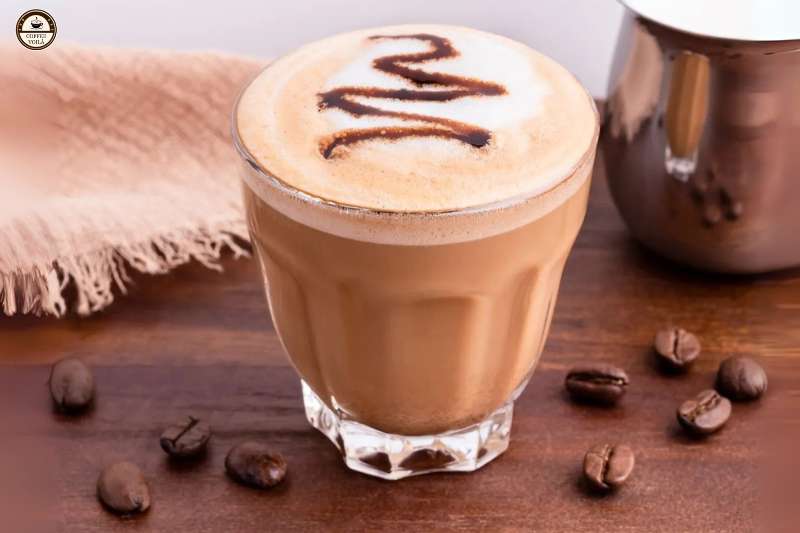
Noisette is short, punchy, and has just the right amount of creaminess to mellow out the espresso without losing that bold flavor. The name “noisette” actually means hazelnut in French.
Not because it contains any nut flavor, but because the milk gives the espresso this warm, hazelnut-like color.
Typically, it’s a single shot of espresso (approximately 30 ml) with a quick pour, around 10 to 15 ml of warm milk. No foam, no froth. Just enough to soften the edge.
This is what I reach for when I want coffee in the afternoon but don’t want to commit to a full milk drink. It perks you up without the heaviness of a café crème or café au lait.
I’ve found it’s best served in a small cup, something ceramic if you can, to hold the heat. And don’t overdo the milk. If it starts looking like a latte, you’ve gone too far.
6 – Café Viennois
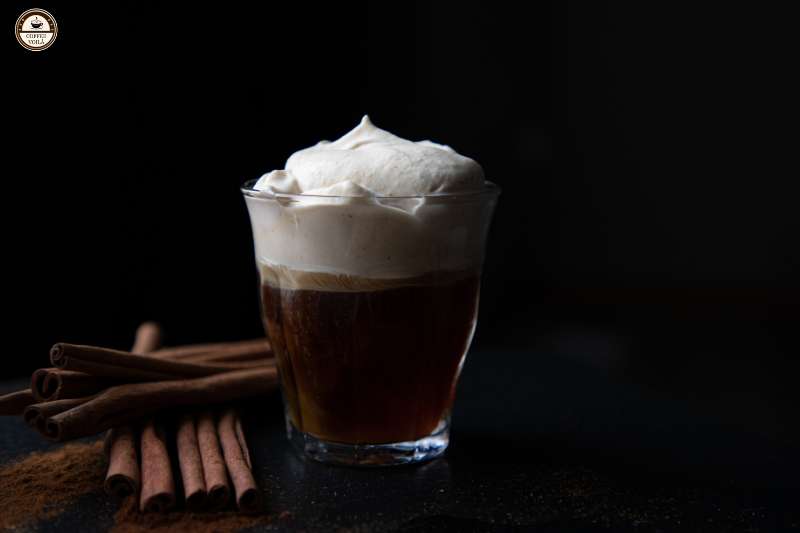
Café Viennois is pretty much dessert in a cup like the French version of a fancy mocha but without the chocolate syrup
The base is simple: one or two shots of espresso (about 30–60 ml), depending on how strong you want it. Then comes the whipped cream, piled on top instead of milk foam.
And not the kind from a can, either. You want freshly whipped cream, which makes a huge difference. Furthermore, you don’t need to sweeten the coffee beforehand since the cream brings its richness.
However, if you’ve got a sweet tooth, a sprinkle of sugar or even a touch of vanilla in the cream can take it up a notch.
Café Viennois is best served in a clear glass. So you can admire the contrast between the dark coffee and the whipped topping.
Notes: It’s not really an everyday kind of drink. I usually save it for chilly mornings, cozy afternoons, or anytime I feel like treating myself (fortunately, that’s not every day).
7 – Café Glacé
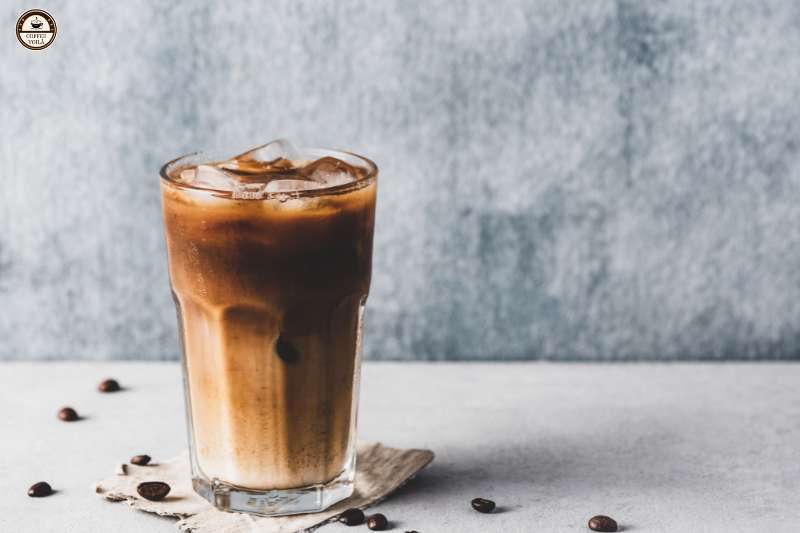
I remember stumbling into this tiny French café in my city, totally melting from the heat, and ordering it without really knowing what to expect.
They brought over a tall glass with espresso poured over clinking cubes of ice. I found it interesting because it had no syrups or whipped cream. Only that chilled, bold coffee.
The basics are simple, but getting the balance right is key. You start with a double shot of espresso, roughly 60 ml brewed strong and hot. Then pour it over a glass full of ice.
The sudden chill keeps the bitterness mellow but still delivers that solid caffeine punch. Some places will add a splash of cold milk or even a touch of simple syrup, depending on your taste.
I personally enjoy adding a tiny bit of milk to smooth things out.
Notes: Chill your glass beforehand so the ice doesn’t melt too quickly and water down the drink. And if you can, use coffee ice cubes. So as they melt, they won’t dilute your coffee.
8 – Café Serré
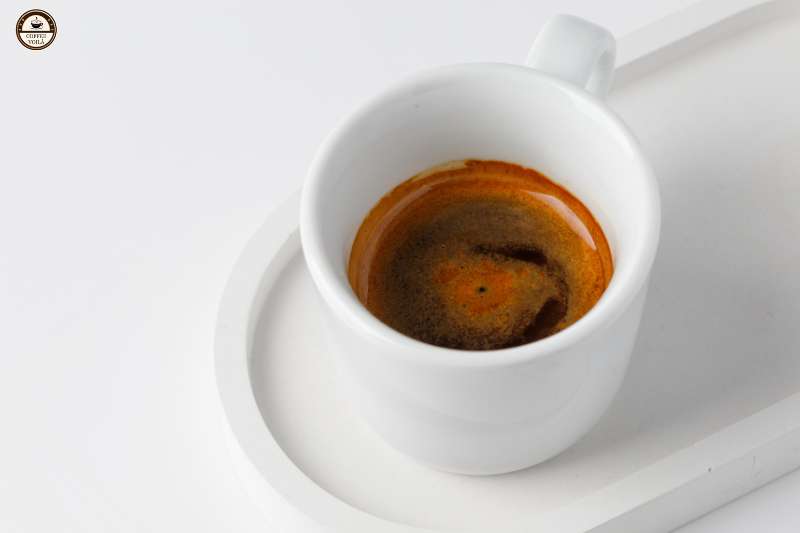
A café serré (literally “tight coffee”) is like espresso on overdrive. Same finely ground dark roast beans, same machine, but less water, usually a 1:1 ratio.
That means one part coffee to one part water. It’s a shorter pull than your average espresso, and because of that, it’s bolder, more concentrated, and incredibly rich.
This isn’t the type of coffee you chug. Instead, you sip it slowly and let it coat your tongue, and take its time waking up your senses.
There’s almost a syrupy texture to it when brewed right. And no, you don’t need sugar. The strength of this drink is the point.
It’s especially popular after lunch or dinner. A little bitter shot to round things off and keep you alert. If you’re trying it at home, make sure your espresso machine can handle short pulls.
I like using a dark French roast for this. Something with body and a bit of smoke. For instance, Lavazza Gran Selezione has been a solid pick for me. It’s bold, slightly smoky, and holds up beautifully in short extractions.
9 – Café Décaféiné (Decaf)
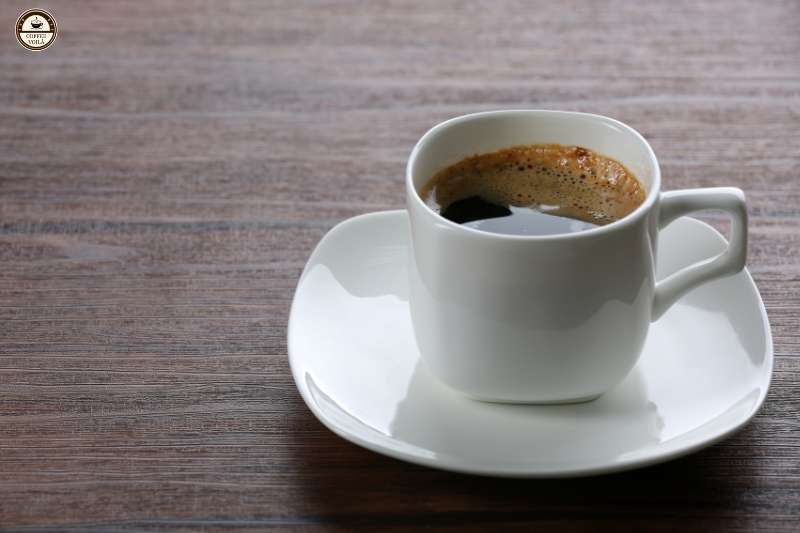
Café décaféiné is your French version of a decaf. Same bold flavor, smooth body, and crema on top… minus the caffeine. It’s perfect for late nights, post-dinner chats, or anyone cutting back without giving up the ritual.
The key is using good-quality decaf beans. For instance, brands like Illy Decaf Classico or Lavazza Dek tend to keep that rich espresso taste intact.
Whether you’re brewing with an espresso machine or French press, stick to your usual ratios like a 1:2 espresso shot or a 1:4 café crème and you’re good to go.
Notes: One thing to watch out for: decaf beans can go stale fast. Always store them in an airtight container, away from heat and moisture.
10 – Café Gourmand
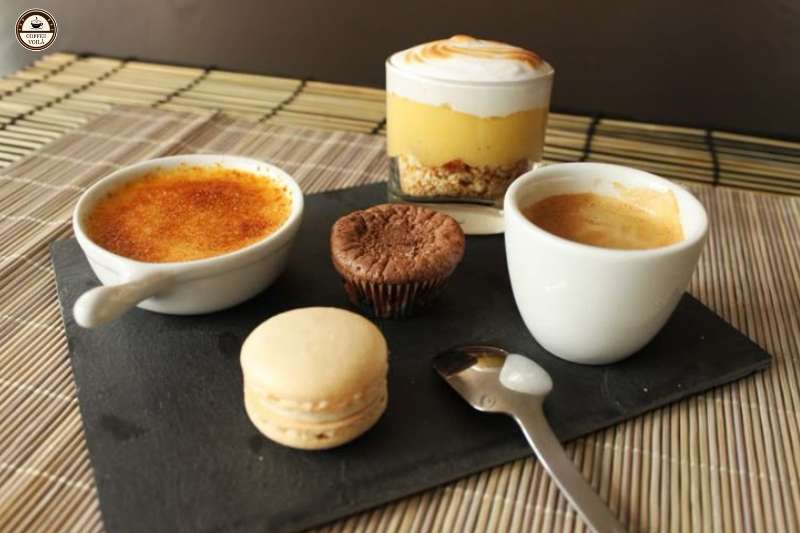
Café gourmand is what happens when you can’t decide between dessert and coffee. It’s a small shot of espresso (frequently a standard 30ml) served alongside an assortment of bite-sized desserts.
Think macarons, mini crème brûlée, a spoon of mousse au chocolat, or even a tiny fruit tart, depending on the restaurant or café.
You get your caffeine fix and your sugar rush in one tidy little plate. I’ve noticed it’s especially popular on French lunch menus, kind of like a cheat code for skipping the full dessert but still treating yourself.
Now, if you’re trying this at home (and you totally should), brew a solid espresso. Something with balance and a bit of nuttiness and pair it with whatever mini sweets you’ve got.
Even store-bought madeleines or a square of dark chocolate do the trick. The presentation helps, too. Use a little tray or slate board and make it feel fancy.
Notes: Don’t drown it in sugar or milk. Keep the espresso clean so it balances out the sweetness on the plate. That contrast is what makes this dessert combo so enjoyable.
11 – Café Brûlot
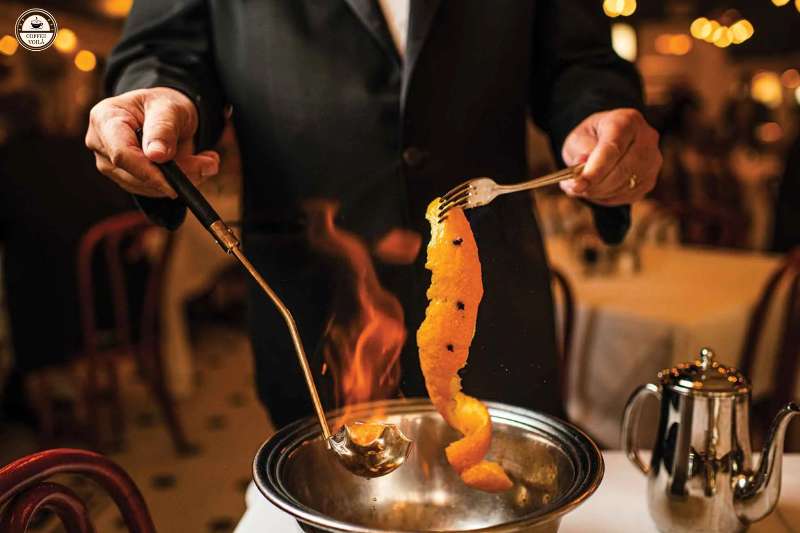
The recipe is rooted in Creole tradition, tracing back to French influence in New Orleans. You’ll need strong black coffee (about 2 cups), brandy (typically around 1/4 cup), a few sugar cubes, orange and lemon peel, plus some cloves, cinnamon sticks, and a dash of nutmeg.
I’ve seen some folks use Grand Marnier instead of brandy for a more orangey kick. Honestly, I don’t find it a bad move.
Here’s the thing: it’s flambéed. For this, light the brandy-sugar-citrus-spice combo in a fire-safe pan or special brûlot bowl (if you’ve got one), then slowly pour in the coffee while the flames are still going.
It takes a steady hand and it helps not to have low ceilings. As a result, you get a warm, rich, spiced, and just a little boozy. It’s perfect for impressing guests or ending a meal with something unforgettable.
Notes: Don’t skip the orange peel. That citrus oil, once ignited, gives the drink its signature aroma. And always, always be careful with the flame. No one wants to flambé their eyebrows.
Last Thoughts
Now I’m curious: have you tried any of these before? Which one made your morning (or your evening)? And hey, if there’s a French-style coffee you swear by that I didn’t include, let me know!
Always happy to discover new sips. So, drop your thoughts below, and with that… voilà!
Questions? We Have Answers.
Get answers to a list of the most Frequently Asked Questions.

